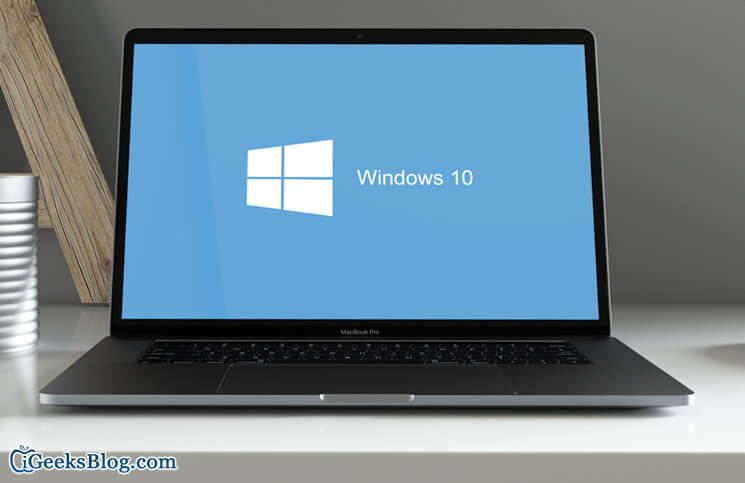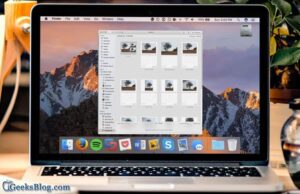Recently, I thought of using Windows 10 but without having to switch my loyalty. I tried Apple’s Boot Camp software to install Windows on my Mac. But I didn’t find the software much user-friendly as I had to partition the hard drive to make space for the new operating system. Hence, I thought of giving a chance to an efficient virtual machine like Parallels Desktop 13. Much to my surprise, running Windows 10 on Mac using Parallels Desktop 13 is a lot easier, and you will really like using it!
For those unfamiliar, a virtual machine is basically a virtual simulation of a real machine, which allows you to run a full-fledged operating system on your computer without needing to partition the hard drive. More significantly, you are able to run both the macOS and Windows on your Mac at one go.
How to Install Windows 10 on Mac Using Parallels Desktop 13
Want to have a go at Parallels Desktop? Great! But before jumping ahead with the process, you need to ensure your Mac meets the requirements. As always, make sure to back up your computer so that you remain on the safer side of the fence in case of any untoward incident.
Your Mac Must…
- Your Mac must have 850 MB of disk space on the boot volume
- It must have an Intel Core 2 Duo, Core i3, Core i5, Core i7, Intel Core M or Xeon processor
- It must have minimum 4GB of memory; though 8GB would a preferable option
- It needs to have an additional disk space
- SSD drive would come very handy especially for boosting performance
- Your Mac must be running OS X Yosemite 10.10.5 or later
Ensure your Mac is compatible with Windows 10
- MacBook Pro (2012 and later)
- MacBook Air (2012 and later)
- MacBook (2015 and later)
- iMac (2012 and later)
- iMac Pro (2017 and later)
- Mac mini (2012 and later)
- Mac mini Server (Late 2012)
- Mac Pro (Late 2013)
More About the Software…
- Parallels Desktop comes at $79.99 for a standard license. Its Pro Edition and Business Edition are priced at $99.99 per year
- The company offers a free two-week trial. Hence, I would suggest you to first try out the free version of the software to ensure it ideally meets your needs before upgrading to the premium version
- Make sure you have a copy of Windows 10. If you don’t have Windows 10, you can get its copy from within Parallels Desktop
Once you have checked all the requirements, head over with the process:
Step #1. First off, you have to download Parallels Desktop 13 on your Mac.
After the program has been downloaded, double-click on the ParallelsDesktop.dmg file to open it.
Step #2. Now, double-click on Install in the Parallels Desktop window.
Click Open to confirm that you want to install Parallels Desktop.
Step #3. Next, you need to accept the License Agreement.
Step #4. Next up, enter Administrator Name and Password for your Mac.
After you have successfully installed Parallels Desktop installed, you will be directed to a page where you will get the option to download Windows 10.
Just in case you already have a copy of Windows 10, you have the option to skip the step. Just in case you don’t have it, click Install Windows.
Click Skip, if you have it.
Next, you have to click New from the Parallels Desktop drop-down menu. Then, choose your copy of Windows 10 from the available options.
Step #5. Now, you need to sign into your Parallels Desktop account. You get the option to create one if you don’t have an account. Once you have signed up for Parallels Desktop account, Windows 10 will appear in a new window.
Talking about the functionality, it seems very much like you are using a web browser with a virtual simulation of Windows 10 on top. Go ahead and give it a long spin! And don’t forget to let us know your valuable feedback as well as whether or not you’d like to go for its premium version.
That’s pretty much it, folks!
Wrap up:
Yes, macOS is widely considered to be more secure and efficient than Windows. But the gap between the two most popular operating systems has shrunk thanks to the arrival of several imposing features in Windows 10. What do you think of the competition between the two?
You might want to read these posts as well:
- Best Calendar Apps for Mac
- Touch ID Not Working on MacBook Pro
- Use extensions in the Photos app on iPhone
🗣️ Our site is supported by our readers like you. When you purchase through our links, we earn a small commission. Read Disclaimer.



